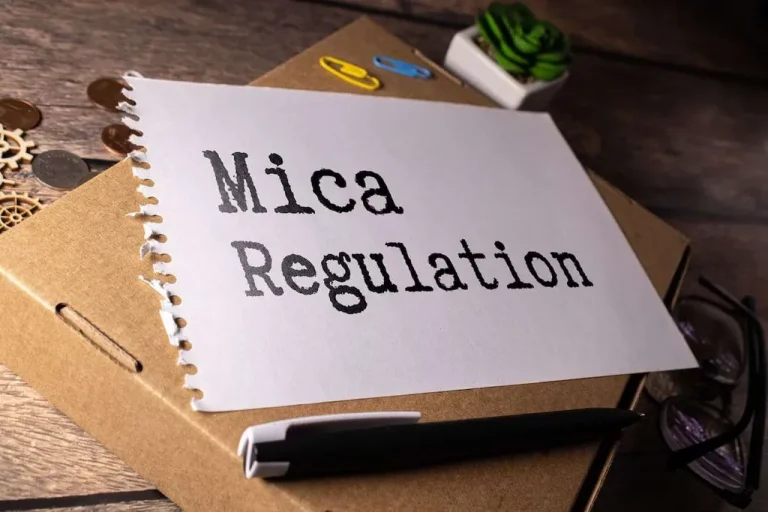Content
Think of it as a rulebook for handling conflicts within the blockchain ecosystem. Furthermore, innovative solutions are being explored to facilitate controlled reversals. For instance, escrow services built on blockchain could hold funds until certain conditions are met, allowing for cancellations https://www.xcritical.com/ if necessary. Depending on the network used, the public address either stays the same (in the case of Ethereum), or changes for each transaction (in the case of Bitcoin).
Good Password Ideas and Tips for Secure Accounts
Blockchain payment systems facilitate fast, secure, low-cost, and transparent payment processing services without the need for the involvement of financial institutions. This efficiency eliminates money transfer waiting periods and third-party processing fees. It simplifies and expedites international, cross-border payments, effectively making money borderless. When used in tandem with smart contract platforms (self-executing contracts based… The financial services industry is subject to a myriad of complex regulations, making Know your customer (KYC) regulatory compliance a significant challenge for institutions. Blockchain technology can facilitate compliance by providing a secure, transparent and tamper-proof record of transactions, making it easier for regulators to monitor and audit financial activities.
If Blockchain Ends Up Enabling More Peer-To-Peer Financial Services, What Role Would Banks Still Have?

To transfer money that has been committed on the blockchain, MasterCard’s blockchain is blockchain for payments incorporated into the company’s payment network, which comprises thousands of financial institutions. Circle is a financial technology company based in Boston that aims to help businesses to use crypto coins and blockchain technology for buying and selling, sending payments, and more. It has enabled businesses to make over 100 million transactions worth billions of dollars. Blockchain payment systems range from free, open source platforms to those that charge transaction fees starting at .0001 % and go up to 1.0 % of the transaction amount.
How Blockchain Technology Will Change Payments
Blockchain could automate many processes, from transaction verification to compliance, significantly reducing manual errors and administrative tasks. This efficiency could cut costs for banks and enable faster transaction settlements. Smart contracts help customers and insurers to manage claims in a totally transparent and secure way. All contracts are recorded on the blockchain, which will determine invalid claims. As an example, in April 2018, Banco Santander pioneered the market’s initial blockchain-based payment transfer system. With Santander One’s “Pay FX,” customers can now enjoy quicker and more efficient international fund transfers thanks to the integration of Ripple’s xCurrent solution.
- Blockchain payment systems are decentralized structures employing blockchain technology to facilitate secure, direct transactions devoid of intermediaries.
- After activating the crypto auto purchase feature, customers can immediately invest their rewards in currencies such as Bitcoin, Litecoin and Ethereum.
- There are numerous intermediaries in the system, which leads to commissions ranging from 3-20% of the amount being transferred.
- TikTok isn’t just a social platform—it’s a cultural phenomenon, where creators turn…
- UBS has successfully piloted a blockchain-based payment system called UBS Digital Cash to enhance the efficiency of cross-border transactions.
- All network participants have access to the distributed ledger and its immutable record of transactions.
Such payment solutions give individuals and businesses a quick, verifiable, and secure avenue to make transactions. As the financial services industry continues to adapt to the digital era, the adoption of blockchain technology will play a critical role in shaping its future landscape. As a decentralized, immutable ledger system, blockchain offers banks the potential to reduce transaction costs, improve security, streamline compliance processes, and enable near-instantaneous transaction settlement.
Mercuryo supports the decentralized ecosystem by enhancing payment use case growth and seamless on-chain integration, simplifying the user experience, especially for newcomers to this market. Providers with parent companies in high-risk countries for anti-money laundering or non-cooperative jurisdictions for tax purposes must implement enhanced checks aligned with the EU AML framework. The new rules mandate crypto-asset service providers to adhere to stringent requirements to safeguard consumer wallets, holding them liable for any loss of investors’ crypto-assets.
That is why you need to ensure that your blockchain payment system is user-friendly and intuitive. Utilizing blockchain in royalty payments offers transformative benefits to artists, creators, and publishers. With present payment systems, each transaction requires the user to authenticate their identification. Verification techniques such as video chats or repeating logins might make users feel uneasy and prolong the transaction process.
The blocks contain time-stamped digital records of any transactions or data exchange on the distributed network of computers. Every block contains its hash and the previous block’s hash, along with data, which connects the blockchain. We all have evolved from accepting payments only via cash to building cashless economies. With the adoption of multiple digital payment methods, people have begun to accept this money exchange system. With the mass adoption of decentralized technology, people realized the benefits of payments via blockchain. A traditional stock market has numerous players, including investors, brokers, regulatory agencies and the centralized institution processing the investments.
Ensuring compatibility and seamless integration with existing infrastructure, such as legacy payment systems, is crucial to foster wide-scale adoption. Standardization efforts and collaboration between different blockchain platforms and payment service providers are necessary to overcome interoperability hurdles. Blockchain technology can facilitate automated payment processing through smart contracts. Smart contracts are self-executing agreements that automatically trigger transactions when predefined conditions are met.
High initial costsThe development and deployment of blockchain solutions require substantial investment. In healthcare, blockchain ensures secure and tamper-proof storage of patient records, supporting compliance with HIPAA’s standards for data privacy and security. Blockchain can support secure payment processes by encrypting transaction data and reducing reliance on intermediaries. When integrated correctly, it helps meet PCI DSS standards for protecting payment card information.

When distributed ledger term applies to transaction baking or payments – it refers to information related to accounts, account balances and account transactions. Now it will make more sense to imagine how a Blockchain can help achieve a distributed ledger. With its immutable and transparent ledger, blockchain acts as a powerful deterrent against financial fraud.

These organizations are evolving the investment process into a lean, mean blockchain machine. Here are just a few examples of blockchain in the finance sector doing just that. Adhere to relevant regulations and compliance standards in your jurisdiction, such as anti-money laundering (AML) and know your customer (KYC) requirements. Proof-of-work (PoW) consensus mechanisms used by some blockchains require significant computing power, leading to high energy consumption. It can be secured with traditional measures, such as by storing it in a safety deposit box or a bank vault.
Here are companies instituting blockchain-based smart contracts in an effort to get ahead of the curve. As blockchain continues to evolve and gain wider acceptance, it has the potential to reshape the payments landscape, ushering in a new era of efficiency, security, and financial empowerment. While there are challenges to overcome, the benefits outweigh the drawbacks, making blockchain a powerful tool to revolutionize the way we transact and interact financially. Next, you’ll need to either develop a custom payment application on top of the chosen blockchain or integrate with existing blockchain-based payment solutions. This will involve working with developers or partnering with technology providers who specialize in blockchain development. Each transaction is encrypted and linked to its previous block, making it computationally impractical to alter or tamper with the data.
